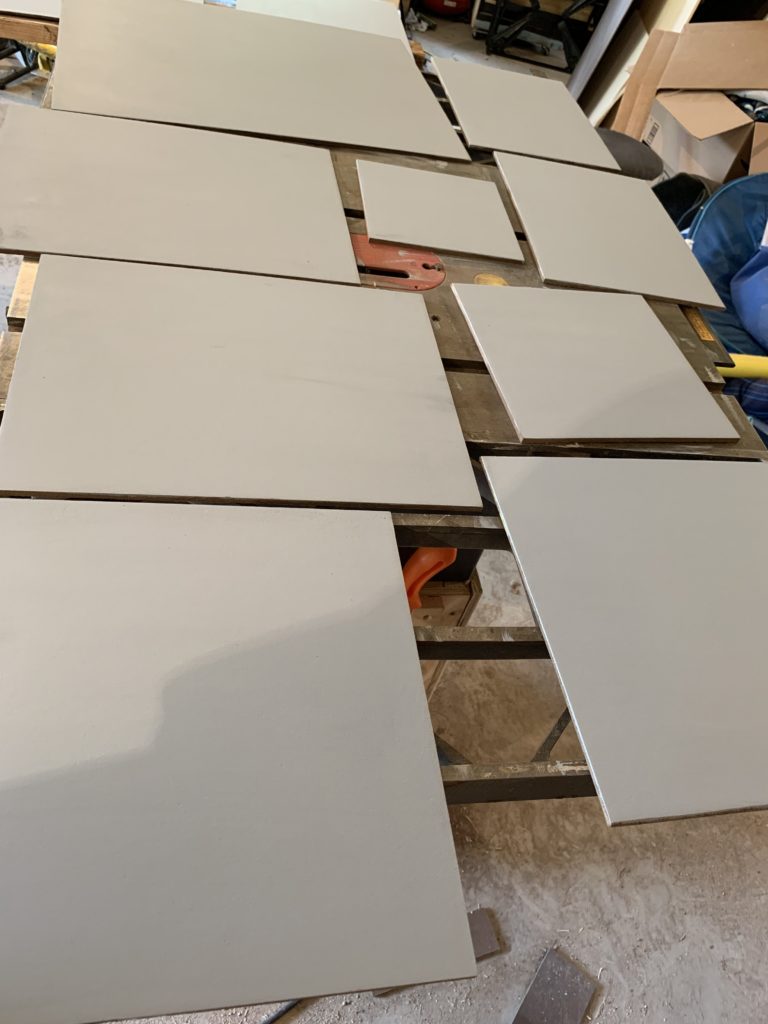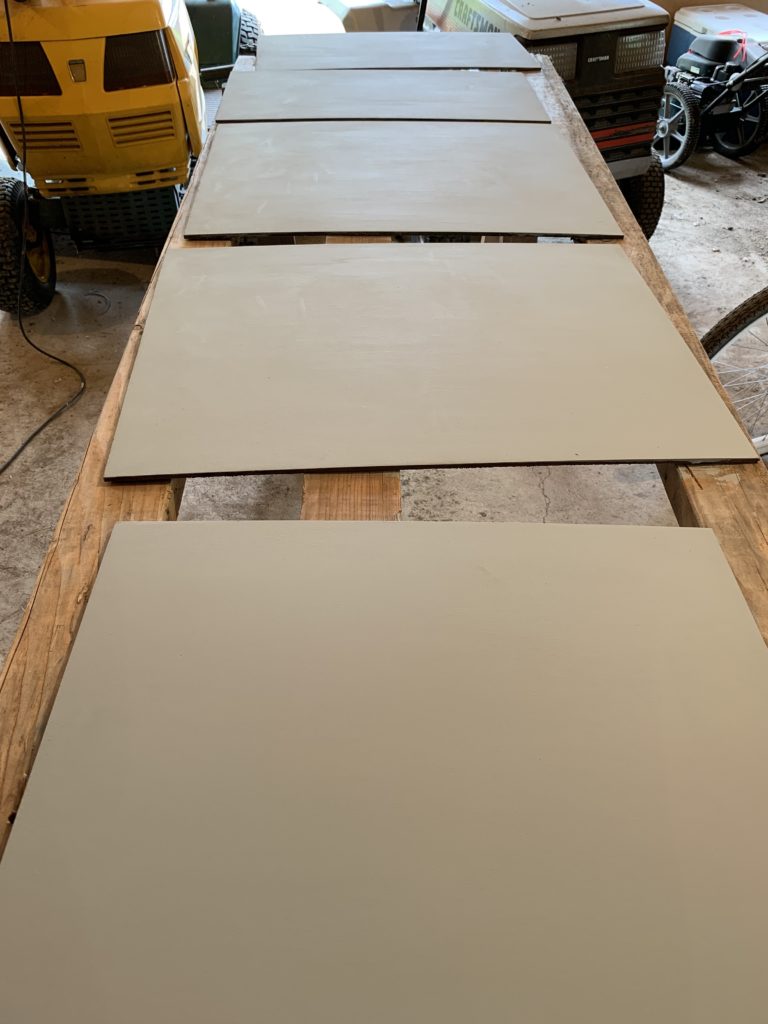June 17th, 2019
For years, I did what I was taught, and I painted on white canvas. That all changed when I watched a tutorial video from one of my favorite nature artists, Terry Isaac. Ever since I watched that video, unless it is a special request, I paint on hardboard, also known as Masonite.
I spent the day today preparing over a dozen pieces of hardboard. After cutting it to size, I sand it really well to take off the glossy finish. This is followed by 6 coats of acrylic gesso (primer), making sure I alternate the direction of the brushstrokes with each coat. I sand each piece after every other layer of gesso, and finish sanding with a fine grit sandpaper to give a smooth finished surface.
So, why hardboard and not canvas, and why do I tint my gesso gray?
- Hardboard can easily be cut to any size, up to 4’ by 8’ so I can be as creative as I want to with the shape of my paintings.
- I have control over the finished texture of the surface. A smooth surface works best for me because it helps with the blending effects I use, and it also works well for painting fine details.
- Hardboard is easier to frame than canvas. It is only ¼” thick, so the rabbet on the frame does not need to be as deep. This opens up many more framing options.
- Hardboard is very sturdy. Although I am still very careful with my artwork, it is nice not to have to worry about tearing a piece of canvas, especially when I transport multiple pieces of art.
- Since I prepare my own hardboard, I can tint the gesso any color I want.
- So why do I tint my gesso gray? Nothing in nature is really white. Even a white flower reflects the colors of everything surrounding it. For one of my recent paintings of a snowy scene with a mountain lion, “Passing Through”, I left the gesso white, thinking since the snow is white that would be the appropriate color to have as my base. I was wrong! Almost as soon as I started, I painted the whole piece with a wash of blue gray. Once I had a chance to really study the snow, I realized that even snow has very little white in it.
There are, of course, a few cons to my method. Some of my bigger paintings have gotten quite heavy. Preparing my own surfaces is also time-consuming, but the results are worth it. After all, what is good enough for a professional like Terry Isaac is certainly good enough for me.


